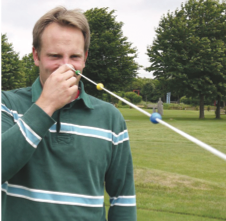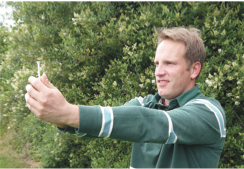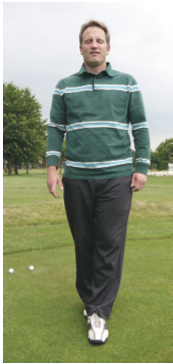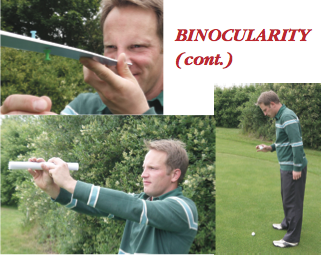What You See Is What You Get
Does this sound familiar to you? A golfer reads the green, gets into a good setup position (aligning his body, setting his stance and the club position), putts the ball…and the ball misses the cup. The pro may ask, “What was the matter?” The golfer most certainly will answer, “I guess I didn’t concentrate enough.”
Concentration and mental fitness take up a considerable part in golf training, and there are numerous exercises for concentration and stabilization of mental capacity. Most of these exercises require the ability to visualize, focus, and fixate. Those abilities demand a high level of proficiency in visual skills.
Nobody questions that golf is a highly sophisticated sport, and everybody agrees that it is an extremely visual sport. But, only very few people know about their own visual system, their very own way of seeing. Most people know whether they have blurry vision far or near, but what about the other eye functions?
To cast some light on it, here’s a look at what the eyes can (and should) be able to do:
 EYE ALIGNMENT
EYE ALIGNMENT
A golfer has to be able to accurately align the eyes to properly aim at the target at different distances and in different stances.

FIXATION
If a golfer is able to keep his eyes quietly on the ball before, during and also after the strike, the more successful his putt or drive will be. Experts call this “the quiet eye.”
EYE FLEXIBILITY
A golfer must possess excellent eye flexibility in order to read the green precisely and in a structured way. Seeing consists of countless snapshots (saccades) that the brain composes to become an overall picture. Proper saccades are crucial for judging the terrain correctly.
FOCUS
Golfers must adjust their focus continuously from near to far. Especially, golfers 45 and older suffer from the diminishing flexibility of the lens, which makes shifting focus really hard. Golfers wearing bifocals know all about this.
 BINOCULARITY
BINOCULARITY
Golfers need excellent coordination of both eyes in order to judge distance, speed, and the grass. Good coordination of the eyes allows for greatest possible accuracy.
VISUAL ENDURANCE VS. FATIGUE
Some golfers have a higher error ratio as the round goes on. A reason for that can be that the visual system tires, especially the coordination of both eyes.
 BALANCE
BALANCE
Balance is crucial when driving the ball, as well as hitting the ball from extremely sloped stances. The sense of balance has its center
in the inner ear and in the motor center of the brain, but it is also very closely linked to the eyes, other senses, and reflexes.
CONTRAST SENSITIVITY
Superior contrast sensitivity enables the golfer to perceive even the smallest detail on the green that may have an impact on the path of the ball. A good working visual system can adapt quickly and reliably to changing light conditions such as bright sun, shade, water reflection, mist, etc.
PERIPHERY
Good peripheral awareness allows the golfer to control perception of changing winds, playing partners, and other disturbing factors while also concentrating on the ball and the hole.
To be able to switch effortlessly between open and closed peripheral awareness is a clear advantage, especially during pre-shot routines.
EYE-HAND/CLUB COORDINATION
The eyes tell the brain where the ball is and the arms swing the club accordingly. Any misinformation from eye to brain automatically leads to failure in alignment of body and club in relation to ball and target line, which results in inaccuracy.
Many failures of a technically proficient golfer are the results of visual miscues. You have to realize “what you see is what you hit.” If you see a position differently from what it is in reality, this wrong visual interpretation will lead to wrong alignment and mistakes in the game.
The good news is that visual skills can be tested, and more important, can easily be trained. For these and more tests, please visit us at www.dynamic-eye.de, or send an e-mail to info@dynamic-eye.de with the subject “golf test,” and we will send you a package of tests and descriptions, including these and other tests for peripheral and space awareness, binocularity, fixation, etc.





